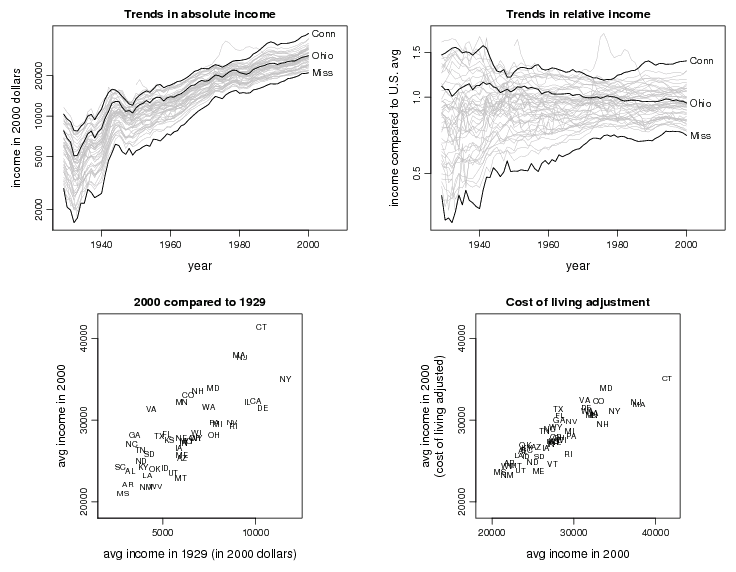Debates about economics often represent debates about politics. Within the United States, we see arguments pitting Democratic-leaning, high-tax states, such as New York and California, against Republican-led, low-tax states, such as Texas.
When it comes to cross-national comparisons, the United States is often pitted against the social democratic countries of Northern Europe.
The latest shot in this battle comes from Ryan McMaken of the Mises Institute in Alabama, who argues that European countries are in fact poorer than almost every state in the United States.
According to McMaken, much of the discussion turns on how wealth or poverty is measured. In particular, simple comparisons of GDP per capita don’t capture the distribution of income, so when comparing different states or countries on standards of living, maybe it makes more sense to use the median. McMaken writes:
These national-level comparisons take into account taxes, and include social benefits (e.g., “welfare” and state-subsidized health care) as income. Purchasing power is adjusted to take differences in the cost of living in different countries into account.
And some specific comparisons:
If it were to join the US as a state, Sweden would be poorer than all but 12 states, with a median income of $27,167. . . . Germany, Europe’s economic powerhouse, has a median income ($25,528) level below all but 9 US states. Finland ranks with Germany in this regard ($25,730), and France’s median income ($24,233) is lower than both Germany and Finland.
He then goes further and does cost-of-living adjustments within the United States:
Now that we’ve accounted for the low cost of living in Mississippi, we find that Mississippi ($26,517) is no longer the state with the lowest median income in real terms. New York ($26,152) is now the state with the lowest median income due to its very high cost of living.
I’m never sure what to make of these cost-of-living adjustments. Yes, rents are higher in New York than in Mississippi, but presumably people are paying more for a reason. Depending on what you include in the basket of goods and services that are included in the cost-of-living calculations, you can get the adjustment to do all sorts of things.
Anyway, McMaken writes:
Once purchasing power among the US states is taken into account, we find that Sweden’s median income ($27,167) is higher than only six states: Arkansas ($26,804), Louisiana ($25,643), Mississippi ($26,517), New Mexico ($26,762), New York ($26,152) and North Carolina ($26,819).
We find something similar when we look at Germany, but in Germany’s case, every single US state shows a higher median income than Germany. Germany’s median income is $25,528. Things look even worse for the United Kingdom which has a median income of $21,033, compared to $26,517 in Mississippi.
I have not spent much time in Germany or Mississippi, so it’s hard for me to judge this one from personal experience. Given Germany’s network of public services compared to Mississippi’s, I wonder if a person can live a better life with an income of $21,000 in Germany, compared to an income of $26,000 in Mississippi. Just for example, a family can manage a lot more easily in Germany without a car or two, compared with Mississippi. So it’s possible that more adjustment would be needed to make sense of these comparisons.
The differences between rich and poor states in the United States used to be much larger than in recent decades:
I want to emphasize the difficulties of statistical comparisons between countries and even between states. Despite these difficulties, though, we can learn, as indicated by the above figure that shows how, for most of the 20th century, the 50 states converged economically, although without ever achieving full parity.




